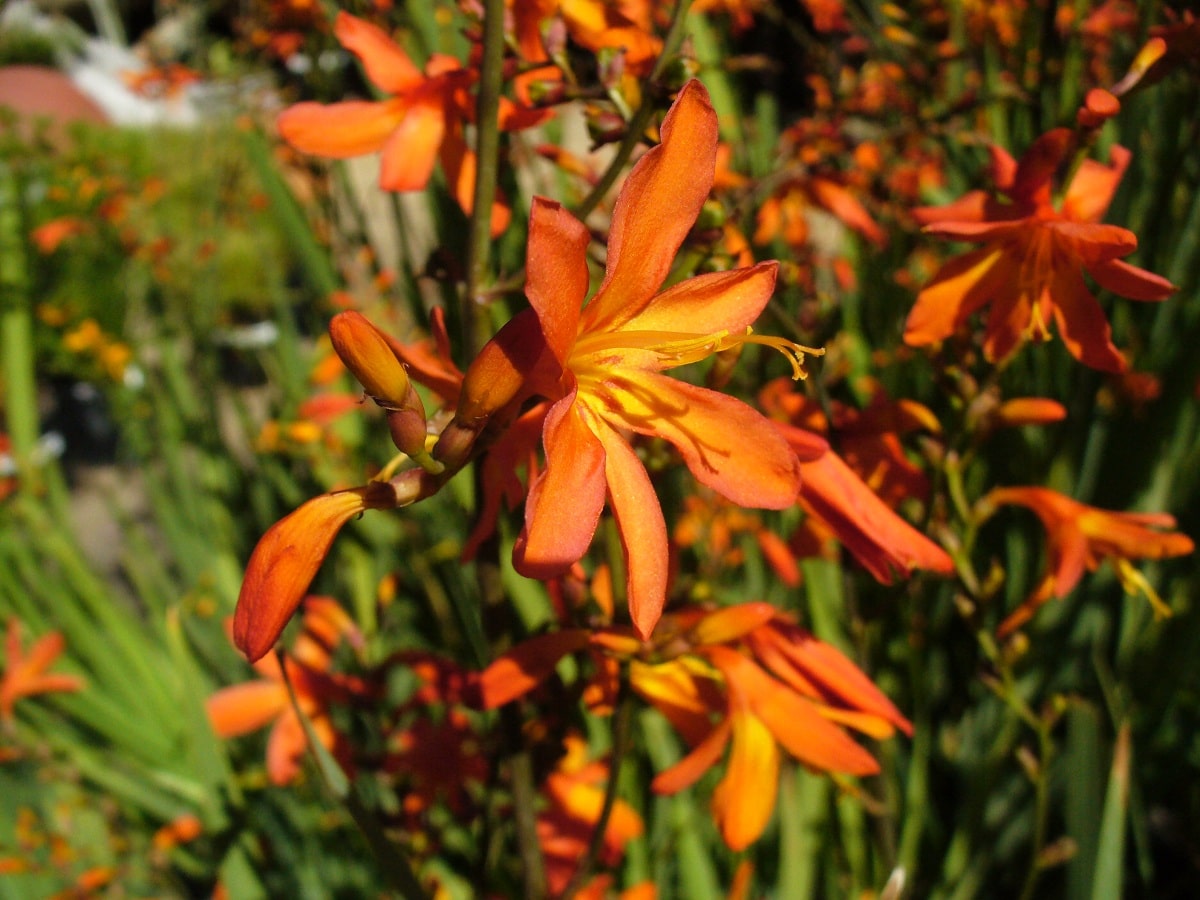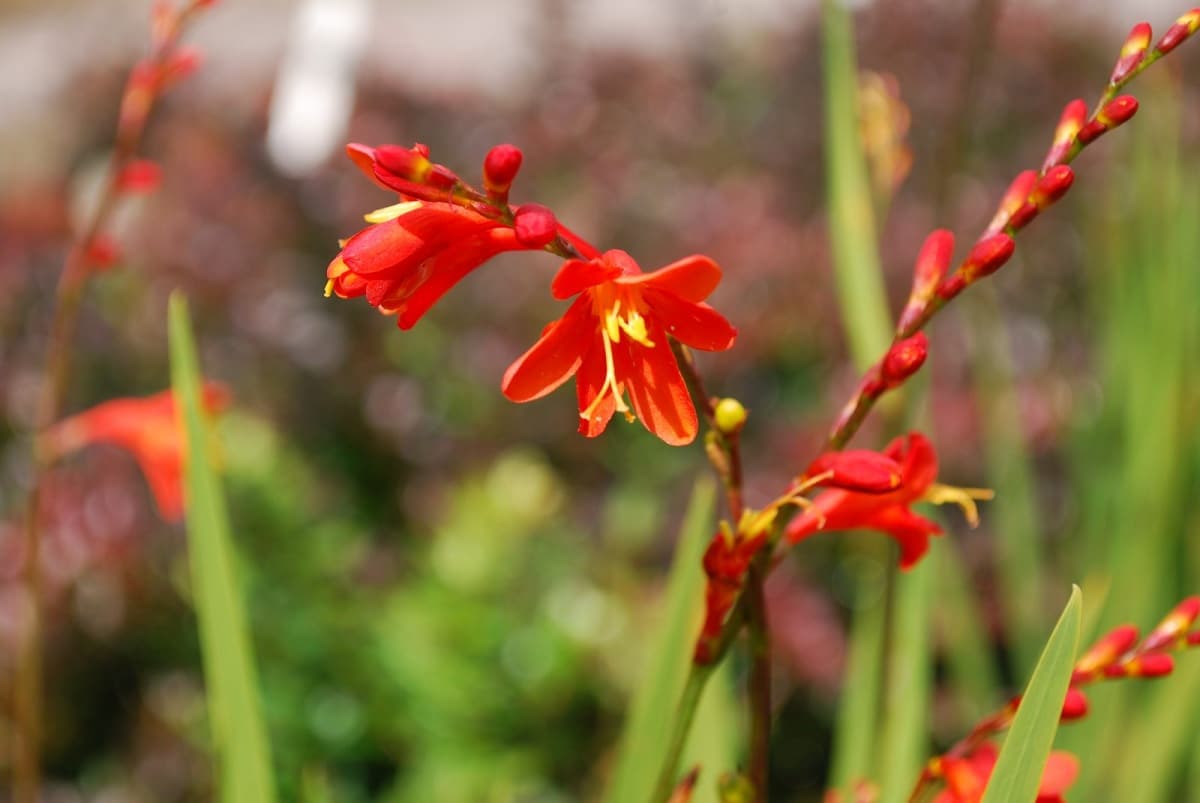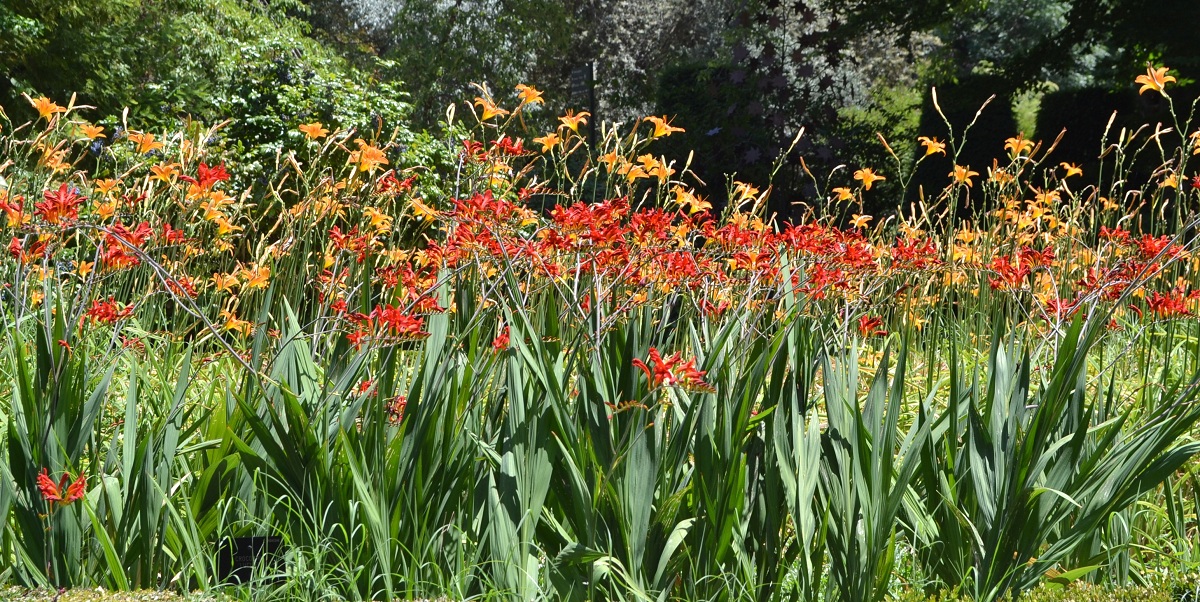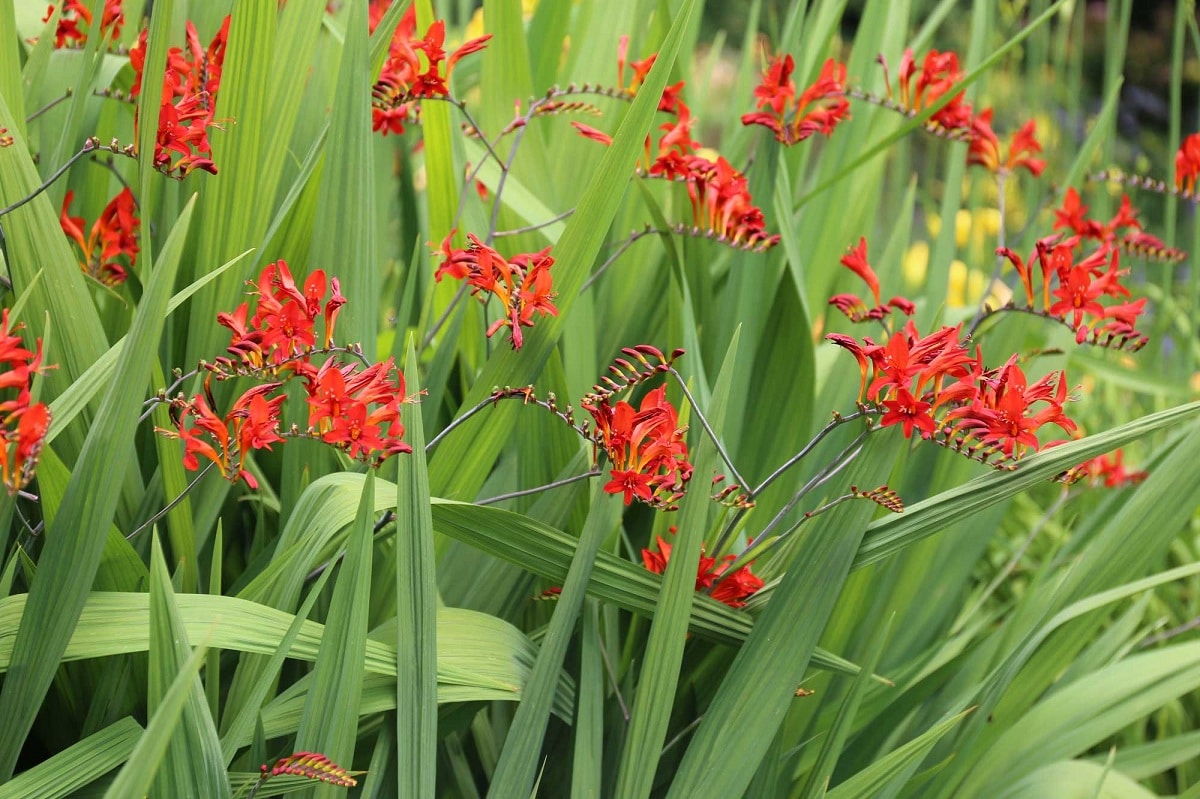
Today we are going to talk about a plant that is used to decorate the gardens and will offer a range of colors that will remind us of sunrise. It's about the crocosmia. This plant has flowers with the 3 colors of dawn: red, orange and yellow and they are flowers that will not only decorate your garden, but will also give a good aroma that becomes more and more intense as the plants dry out. This makes it one of the most necessary plants to achieve a good decoration of the gardens thanks to its brightly colored flowers and sword shape.
In this article we are going to tell you about all the characteristics, care and maintenance of croscomia.
Key features

It is a type of perennial plant that is capable of providing extensive branches where there are a large number of flowers with a particular sword shape. The flowers have a smooth texture and a shiny appearance. Its general structure is quite colorful during the summer months. These are the months where we can have the garden with a range of colors that will remind us of sunrise. In addition, it has a subtle aroma that becomes more and more present as the plant develops, reaches maturity and the leaves end up drying.
There are a great variety of crocosmia species that They vary in terms of the color of the flowers, the size and the time they have in their bloom. All species of crocosmia are of South African origin. This makes them very resistant to drought, so they become a good option to have in our garden in the driest season.
Description

Crocosmia is nothing more than a small group of plants that belong to the family Iridaceae. Depending on the species we are dealing with, we can find some specimens that are deciduous and others that are perennial. Normally all species grow as underground basal horns. Its leaves are alternate cauline and ensiform. This means that its flowers and leaves are sword-shaped and the blades of these swords are parallel-veined.
The margin of the plant is entire and they have the unusual horns that form vertical chains from the youngest specimens at the top. The roots of this plant are contractile. This characteristic allows them to crawl through deep areas to find water. This ability that roots have to be able to adapt to different conditions and seek water in deeper areas, which makes some of the crocosmia species can be considered invasive. And is that They can become difficult to control in the backyard of many houses and in shopping centers.
In order to be so resistant to drought and other more adverse conditions, they are able to last a long time with hardly any maintenance. Its inflorescences are very colorful and They range from 4 to 20 vividly colored flowers alternating between red, orange and yellow. These inflorescences are superimposed on an erect stem that is horizontally branched. Several things can happen, depending on the species we are dealing with. The first is that the terminal inflorescence can have a single flower. The other is that the last inflorescence has a raceme. These terminal inflorescences usually bloom from early summer to well into fall. Throughout this time, the subtle aroma that the flowers give off becomes more and more intense until the flower ends up drying.
These plants are pollinated by insects and some birds such as the hummingbird.
Crocosmia bloom
During the flowering of this type of plants some thin stems of about 60 centimeters long are produced. Some of the flowers can suffer in the months of May and June, depending on the temperatures. However, most species will continue to produce flowers from the summer well into the fall.
There are many people who use these plants to cut their flowers and use them in interior arrangement designs. They are quite resistant although they require a lot of space for their growth. This makes them sometimes more invasive plants. They have a slower but constant rate of dispersion. The green leaves can be seen as wavy or pleated and also make a very attractive sight for the garden. This makes the plant also useful for decoration, even before flowering.
Crocosmia care

To take care of this plant and to help us decorate our garden we need to know some of the aspects to take into account in its care. The first thing about it is exposure to the sun. Crocosmia needs full sun exposure or maybe some semi shade and be continuously protected from the wind. You must find a way for the garden where it can be kept from the wind but can have enough hours of sun.
Needs very well drained soil and that it does not accumulate water from irrigation or rainfall. If the irrigation water is stored it will cause that bulb to rot. It is also not advisable for the soil to have an excess of organic matter. If we want to plant the bulbs we must do it at the end of winter, which is where they will have the best temperature to be able to develop correctly. To sow the bulbs we will need to bury them at depths of about 4-5 centimeters.
Regarding irrigation, It should be moderately all year round. If the temperatures in summer are quite high, we should slightly increase the water supply during the flowering period. One of the tips that is usually given is to compost with manure after previously removing the earth. This must be done before planting them so that they have a better development.
Among the pests and diseases by which crocosmia can be affected we find the Red spider, trips and aphids outdoors.
I hope that with this information you can learn more about crocosmia.
Hi good morning .
I would like to know how Crocosmia reproduces
Hi Claudia.
Crocosmia is multiplied by bulbs normally, which are planted in winter.
It can also be by seeds in spring-summer.
Greetings.